Abstract
BACKGROUND: There are no published population-based studies of occupational carpal tunnel syndrome (OCTS) using a strict case definition. Most studies are either industry specific or present patient self-report of symptoms. METHODS: We conducted a population-based incidence study of OCTS using the Washington State Workers' Compensation database. Incident OCTS claims were identified with paid bills for physician reported ICD codes 354.0 and 354.1. RESULTS: There were 7,926 incident OCTS claims identified for the years 1984-1988, which yields an industry-wide incidence rate of 1.74 claims/1,000 FTEs. The mean age (37.4 years) and female/male ratio (1.2:1) in this population differ from those reported in nonoccupational carpal tunnel studies (mean age, 51 years; female/male ratio, 3:1). The female-specific OCTS incidence rate increased significantly during the study period. The highest industry specific OCTS rates were found in the food processing, carpentry, egg production, wood products, and logging industries. CONCLUSION: Demographic differences and industry-specific rates consistent with workplace exposures suggest that OCTS is distinct from CTS occurring in nonoccupational settings. Workers' compensation data proved useful in identifying high risk industries.
Full text
PDF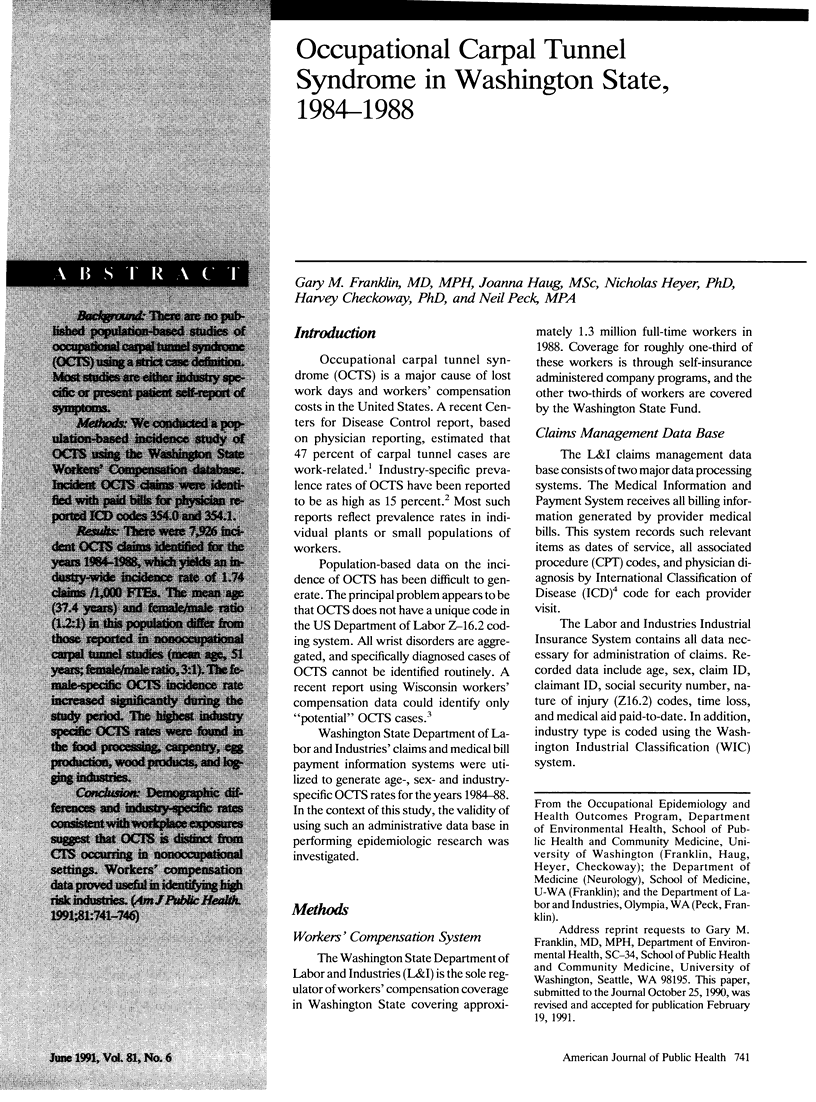
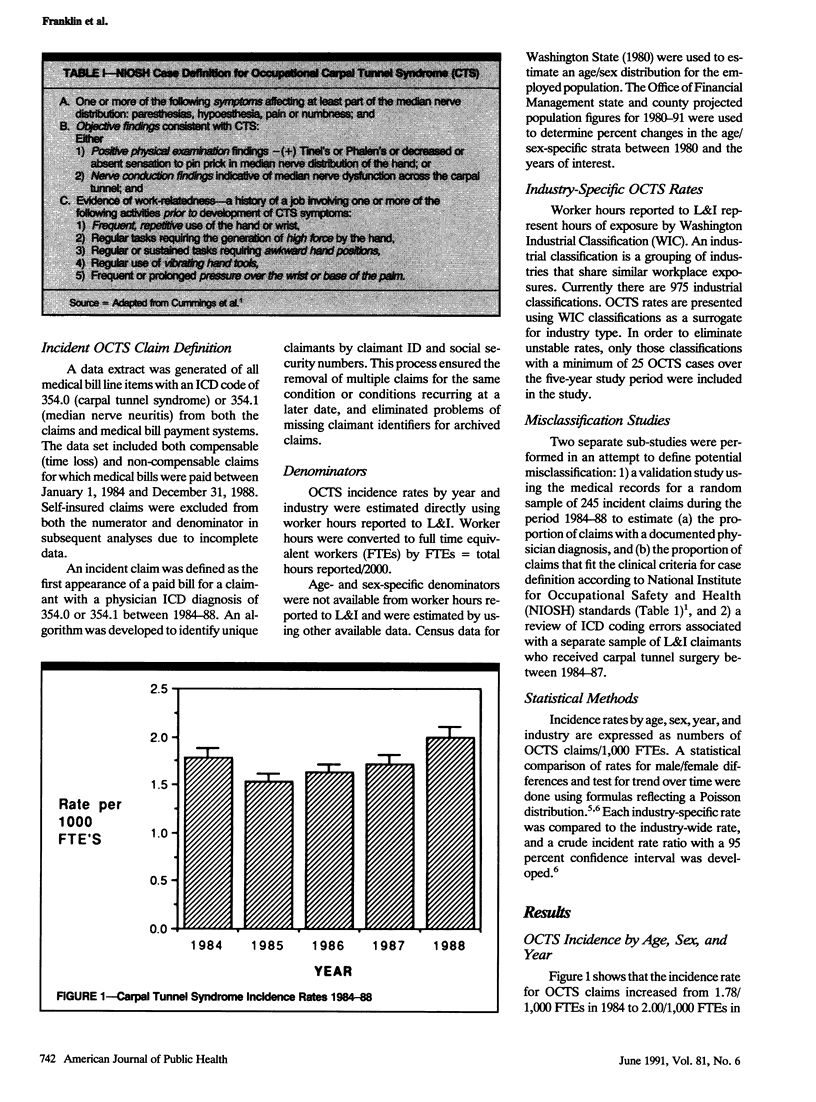
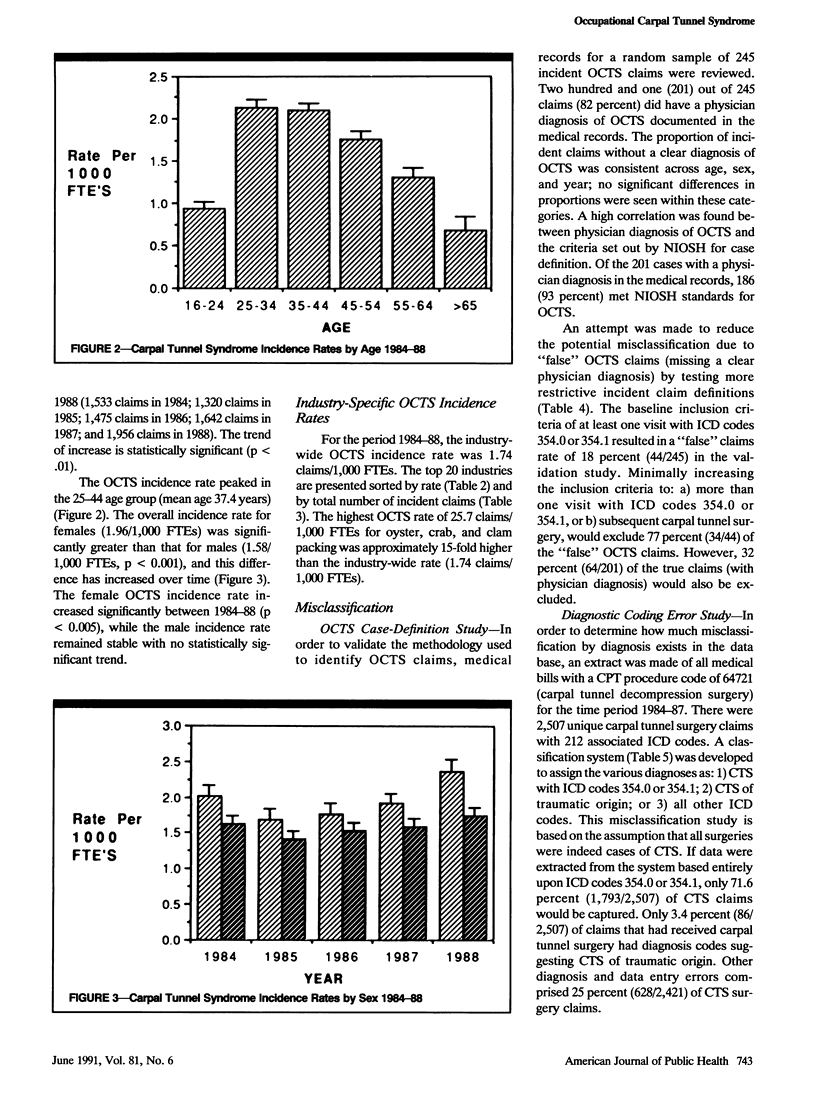
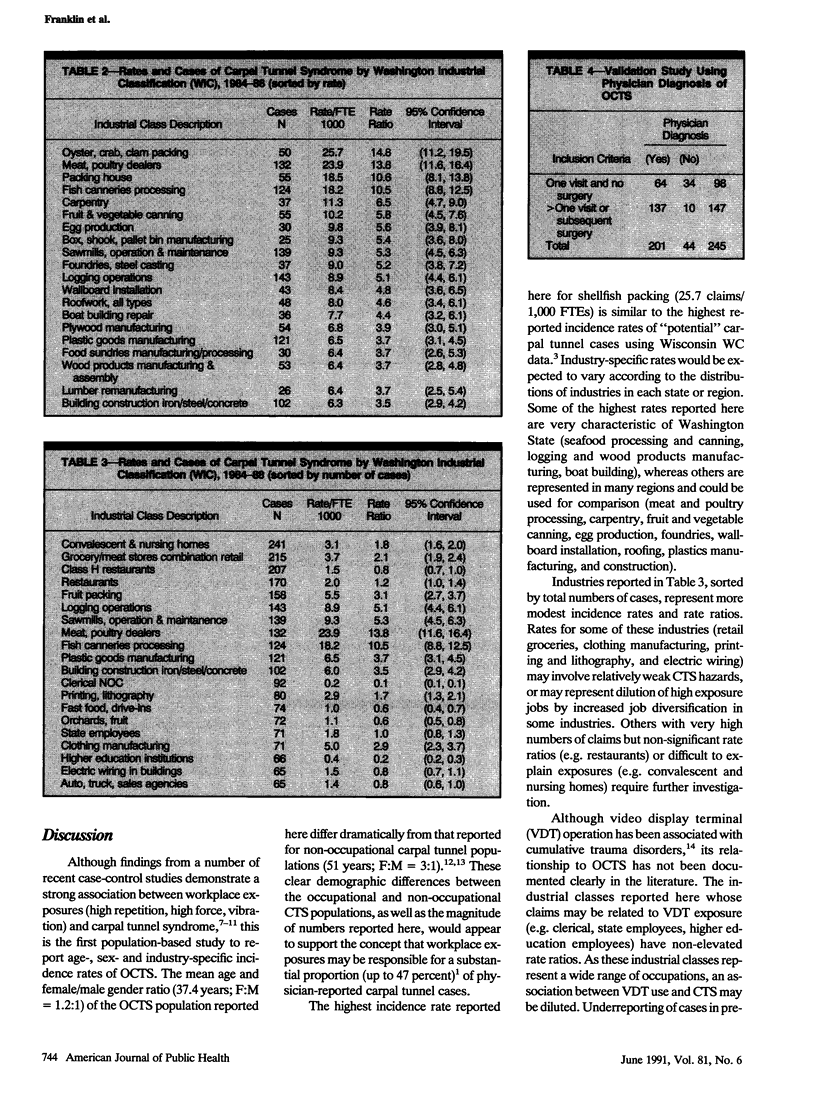
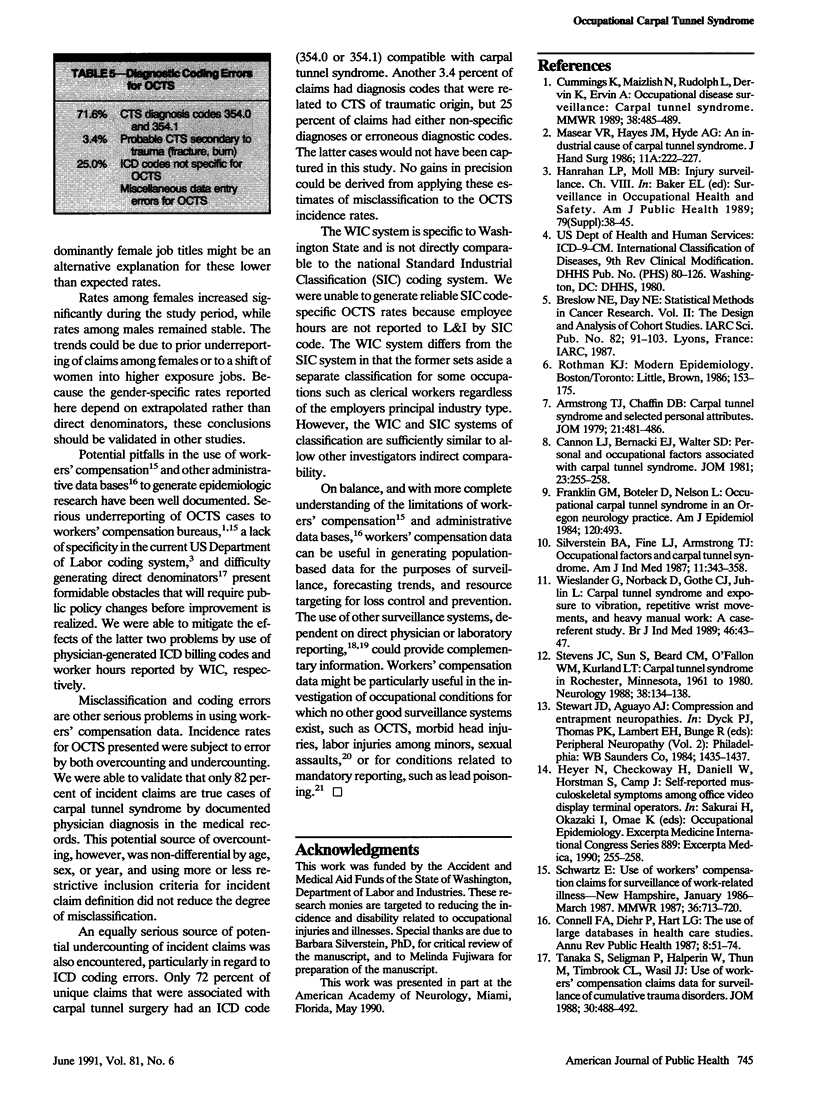
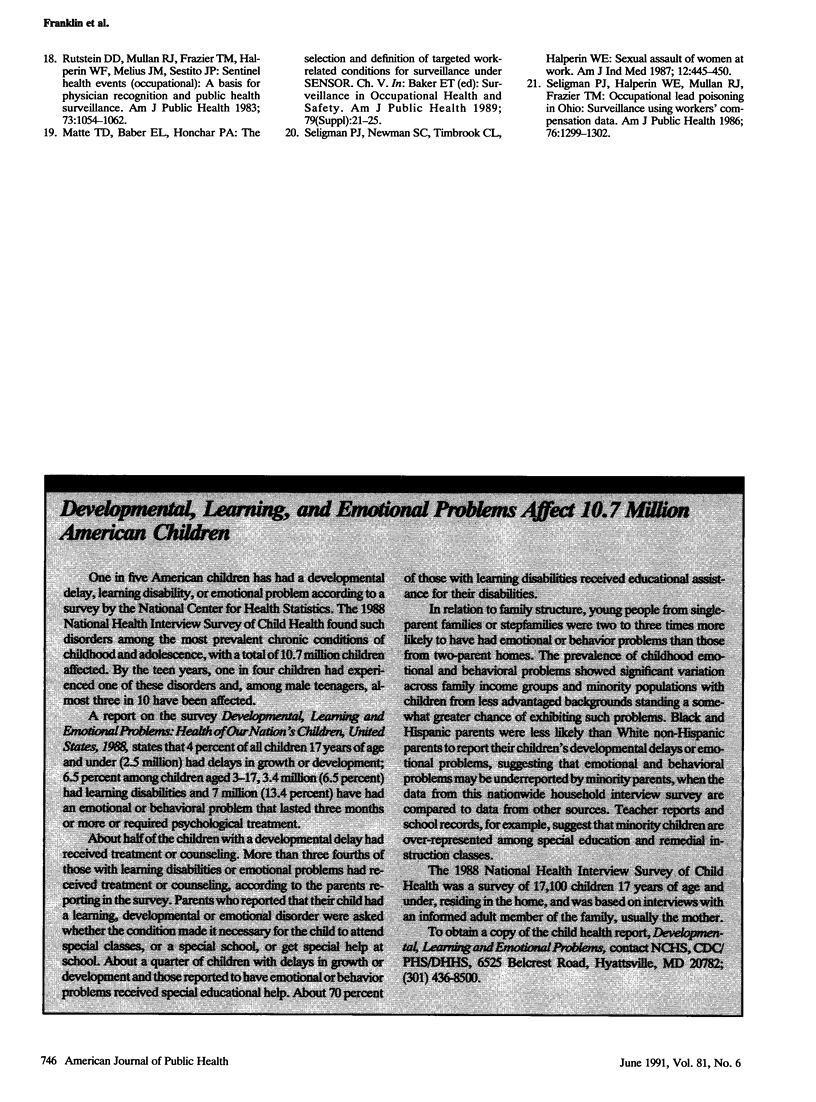
Selected References
These references are in PubMed. This may not be the complete list of references from this article.
- Armstrong T. J., Chaffin D. B. Carpal tunnel syndrome and selected personal attributes. J Occup Med. 1979 Jul;21(7):481–486. [PubMed] [Google Scholar]
- Cannon L. J., Bernacki E. J., Walter S. D. Personal and occupational factors associated with carpal tunnel syndrome. J Occup Med. 1981 Apr;23(4):255–258. [PubMed] [Google Scholar]
- Centers for Disease Control (CDC) Occupational disease surveillance: carpal tunnel syndrome. MMWR Morb Mortal Wkly Rep. 1989 Jul 21;38(28):485–489. [PubMed] [Google Scholar]
- Centers for Disease Control (CDC) Use of workers' compensations claims for surveillance of work-related illness--New Hampshire, January 1986-March 1987. MMWR Morb Mortal Wkly Rep. 1987 Nov 6;36(43):713-4, 719-20. [PubMed] [Google Scholar]
- Connell F. A., Diehr P., Hart L. G. The use of large data bases in health care studies. Annu Rev Public Health. 1987;8:51–74. doi: 10.1146/annurev.pu.08.050187.000411. [DOI] [PubMed] [Google Scholar]
- Hanrahan L. P., Moll M. B. Injury surveillance. Am J Public Health. 1989 Dec;79 (Suppl):38–45. doi: 10.2105/ajph.79.suppl.38. [DOI] [PMC free article] [PubMed] [Google Scholar]
- Masear V. R., Hayes J. M., Hyde A. G. An industrial cause of carpal tunnel syndrome. J Hand Surg Am. 1986 Mar;11(2):222–227. doi: 10.1016/s0363-5023(86)80055-7. [DOI] [PubMed] [Google Scholar]
- Matte T. D., Baker E. L., Honchar P. A. The selection and definition of targeted work-related conditions for surveillance under SENSOR. Am J Public Health. 1989 Dec;79 (Suppl):21–25. doi: 10.2105/ajph.79.suppl.21. [DOI] [PMC free article] [PubMed] [Google Scholar]
- Rutstein D. D., Mullan R. J., Frazier T. M., Halperin W. E., Melius J. M., Sestito J. P. Sentinel Health Events (occupational): a basis for physician recognition and public health surveillance. Am J Public Health. 1983 Sep;73(9):1054–1062. doi: 10.2105/ajph.73.9.1054. [DOI] [PMC free article] [PubMed] [Google Scholar]
- Seligman P. J., Halperin W. E., Mullan R. J., Frazier T. M. Occupational lead poisoning in Ohio: surveillance using workers' compensation data. Am J Public Health. 1986 Nov;76(11):1299–1302. doi: 10.2105/ajph.76.11.1299. [DOI] [PMC free article] [PubMed] [Google Scholar]
- Seligman P. J., Newman S. C., Timbrook C. L., Halperin W. E. Sexual assault of women at work. Am J Ind Med. 1987;12(4):445–450. doi: 10.1002/ajim.4700120410. [DOI] [PubMed] [Google Scholar]
- Silverstein B. A., Fine L. J., Armstrong T. J. Occupational factors and carpal tunnel syndrome. Am J Ind Med. 1987;11(3):343–358. doi: 10.1002/ajim.4700110310. [DOI] [PubMed] [Google Scholar]
- Stevens J. C., Sun S., Beard C. M., O'Fallon W. M., Kurland L. T. Carpal tunnel syndrome in Rochester, Minnesota, 1961 to 1980. Neurology. 1988 Jan;38(1):134–138. doi: 10.1212/wnl.38.1.134. [DOI] [PubMed] [Google Scholar]
- Tanaka S., Seligman P., Halperin W., Thun M., Timbrook C. L., Wasil J. J. Use of workers' compensation claims data for surveillance of cumulative trauma disorders. J Occup Med. 1988 Jun;30(6):488–492. [PubMed] [Google Scholar]
- Wieslander G., Norbäck D., Göthe C. J., Juhlin L. Carpal tunnel syndrome (CTS) and exposure to vibration, repetitive wrist movements, and heavy manual work: a case-referent study. Br J Ind Med. 1989 Jan;46(1):43–47. doi: 10.1136/oem.46.1.43. [DOI] [PMC free article] [PubMed] [Google Scholar]


